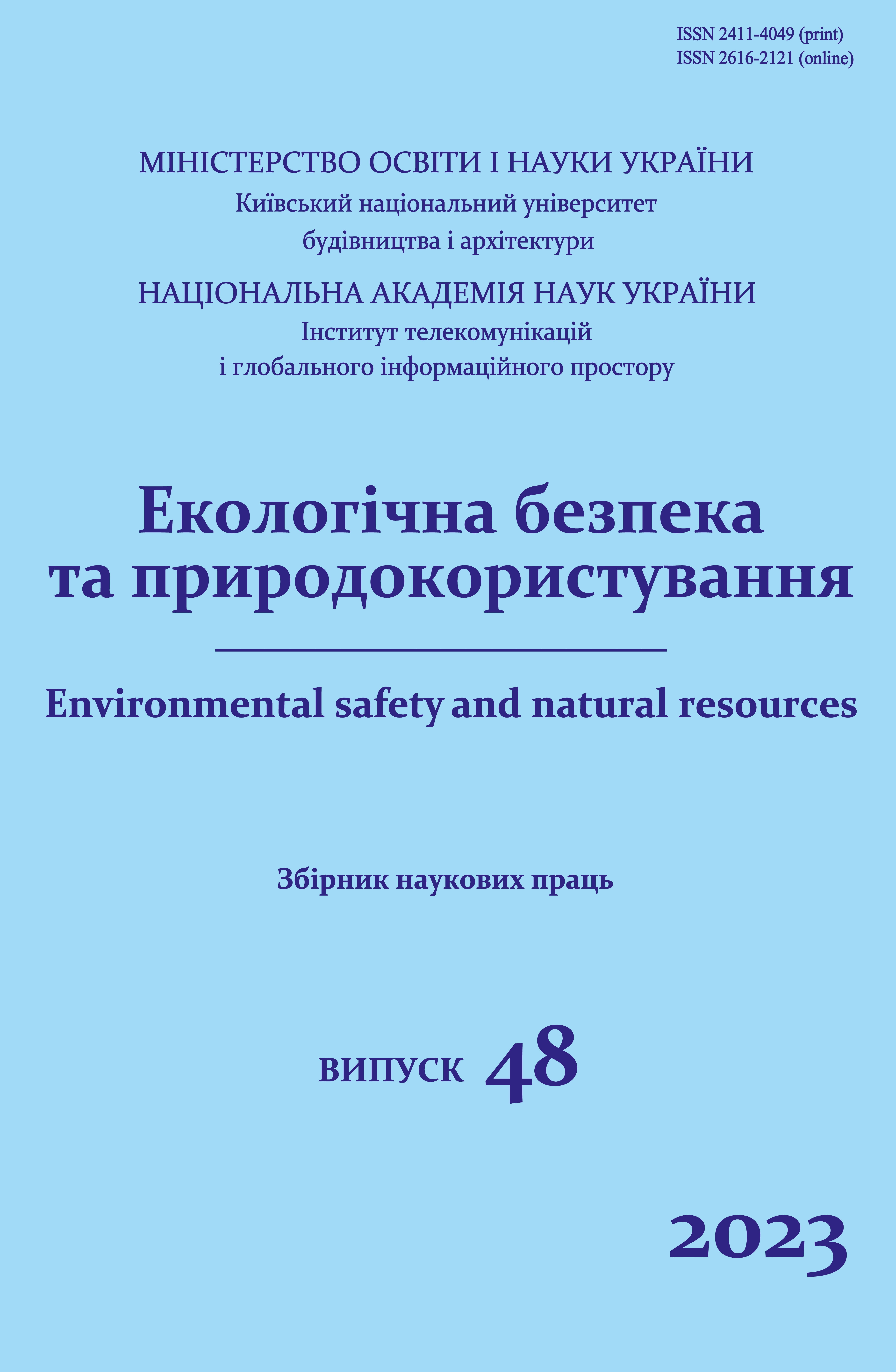Organization of atmospheric air monitoring in Kharkiv
DOI:
https://doi.org/10.32347/2411-4049.2023.4.81-90Keywords:
atmospheric air, pollutants, air monitoring, maximum permissible concentration, air pollution monitoring postAbstract
The retrospective and current state of atmospheric air quality in the Kharkiv agglomeration was considered. The results of monitoring of atmospheric air quality in recent years have been studied. The research of the existing system state of observation and monitoring of atmospheric air in the city of Kharkiv was conducted. The procedure for organizing atmospheric air quality observations abroad is given. The measures are proposed to bring the current monitoring system into compliance with European standards and the requirements of legislative and regulatory documents of Ukraine.
It is necessary to determine a refined list of enterprises that exert the greatest man-made load on the agglomeration of the city of Kharkiv as a whole, to adjust the locations of stationary monitoring posts for atmospheric air pollution in the city of Kharkiv in order to ensure better quality monitoring, in particular in residential areas.
It is necessary to update the existing monitoring system, namely the arrangement of new indicative observation posts on the state of the atmospheric air, which will make it possible to conduct observations at these posts online for: CO, SO2, NOx, O3, PM2.5, PM10.
In order to observe the state of the atmospheric air in places where there are no stationary posts, but there is an influence of industrial facilities, it is necessary to use route observation posts (fixed observation points), which must be monitored by a mobile analytical laboratory.
Information on the state of atmospheric air pollution should be available to executive authorities and all sections of the population, therefore, it is necessary to design and create an information and analytical system for monitoring the quality of atmospheric air.
References
Constitution of Ukraine dated 28.06.1996 No. 254k/96-ВР. (1996). Retrieved from https://zakon.rada.gov.ua/laws/show/254%D0%BA/96-%D0%B2%D1%80#Text
Law of Ukraine "On Environmental Protection" dated 06/25/91 No. 1264-XI. (1991). Retrieved from http://www.rada.gov.ua
Resolution of the Cabinet of Ministers of Ukraine No. 827. (August 14, 2019). "Some issues of state monitoring in the field of atmospheric air protection". Retrieved from http://zakon4.rada.gov.ua/
Ministry of Natural Resources. Retrieved from http://www.menr.gov.ua/
Directive 2008/50/EU of the European Parliament and the Council. (May 21, 2008). "On atmospheric air quality and cleaner air for Europe". Retrieved from http://zakon4.rada.gov.ua/
Order of the Ministry of Internal Affairs of Ukraine dated 04/21/2021 No. 300, registered with the Ministry of Justice of Ukraine on 05/13/2021 under No. 635/36257. (2021). Retrieved from http://zakon4.rada.gov.ua/
Varlamov, Ye.M., Kvasov, V.A., Bruk, V.V., & Bereshko, I.M. (2016). Monitoring of the natural environment. Conceptual provisions and ways of implementation: Monograph. E.M. Varlamov (Ed.). Kh.: National. Aerospace University named after M. E. Zhukovsky "Khark. Aviation Institute" [in Ukrainian].
Downloads
Published
How to Cite
Issue
Section
License
Copyright (c) 2023 Kyriienko P.H., Varlamov Ye.M., Kvasov V., Lobov S.O.

This work is licensed under a Creative Commons Attribution 4.0 International License.
The journal «Environmental safety and natural resources» works under Creative Commons Attribution 4.0 International (CC BY 4.0).
The licensing policy is compatible with the overwhelming majority of open access and archiving policies.

